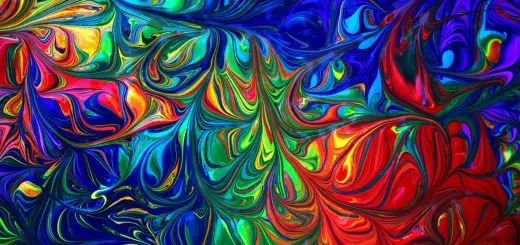Taoist Beliefs: Harmony with the Universe

Looking for more amazing products? Check out our online store and explore our collection here! Happy shopping!
Before diving in, please note: This post is for informational purposes only. If you’d like to know more about how we approach topics, feel free to check out our friendly Disclaimer Page.
Hey there, amazing readers! 
We’re committed to delivering quality posts, and your support (even just sticking around despite the ads) means everything to us. So, bear with us, and thanks for helping us keep the good vibes rolling. Now, on to the fun stuff!
TRANSLATE BUTTON AT THE END OF THE ARTICLE
A Quick Overview
Taoism, also known as Daoism, is an ancient Chinese philosophy and religion that emphasizes living in harmony with the Tao, which is often translated as "the Way" or "the Path." Taoist beliefs focus on the natural order of the universe and the importance of balance and harmony in all aspects of life.
Central to Taoist teachings are the concepts of Yin and Yang, the Five Elements, Wu Wei, and the Three Jewels.
Introduction to Taoist Beliefs
Taoism originated in China around the 4th century BCE, and its teachings have had a profound influence on Chinese culture, art, and medicine.
Taoism is based on the writings of the legendary sage Laozi, who is traditionally credited with writing the Tao Te Ching, a foundational text in Taoist philosophy.
The Tao Te Ching emphasizes the importance of simplicity, humility, and living in accordance with the natural rhythms of the universe.
The Concept of Tao
At the heart of Taoist beliefs is the concept of Tao, which is the ultimate source and essence of all things.
The Tao is ineffable and transcendent, beyond human comprehension or explanation.
It is the underlying principle that governs the universe and guides all things towards their natural course.
Taoists seek to align themselves with the Tao by cultivating inner peace, practicing mindfulness, and embracing the flow of life without resistance.
Yin and Yang: Balancing Opposites
Yin and Yang are complementary forces that represent the dualistic nature of the universe.
Yin is associated with darkness, passivity, and femininity, while Yang is associated with light, activity, and masculinity.
Taoist teachings emphasize the balance and interplay of Yin and Yang, as well as the harmony that arises when these opposing forces are in equilibrium.
By harmonizing Yin and Yang within oneself, Taoists seek to achieve holistic health and well-being.
Harmony with Nature
Taoism teaches the importance of living in harmony with nature and the natural world.
Nature is viewed as a source of wisdom, inspiration, and spiritual nourishment.
Taoists observe the cycles of the seasons, the movements of the planets, and the rhythms of the earth in order to cultivate a deeper connection to the universe.
By aligning themselves with the natural order of things, Taoists believe they can achieve greater peace, balance, and fulfillment.
The Three Jewels of Taoism
The Three Jewels of Taoism are compassion, moderation, and humility.
These virtues are considered essential for living a virtuous and meaningful life.
Compassion involves showing kindness and empathy towards others, while moderation entails practicing self-restraint and avoiding excess.
Humility is the recognition of one’s own limitations and imperfections, as well as the willingness to learn from others and embrace change.
Wu Wei: The Art of Effortless Action
Wu Wei, often translated as "non-action" or "effortless action," is a central tenet of Taoist philosophy.
It emphasizes the importance of acting in accordance with the natural flow of the universe, rather than forcing or resisting it.
Wu Wei encourages individuals to let go of their ego-driven desires and agendas, and instead, allow things to unfold organically.
By practicing Wu Wei, Taoists seek to cultivate a sense of ease, spontaneity, and flow in their actions and interactions.
The Five Elements in Taoist Beliefs
In Taoist cosmology, the Five Elements—Wood, Fire, Earth, Metal, and Water—symbolize the fundamental forces of nature and the cyclical processes of change and transformation.
Each element is associated with specific qualities, colors, seasons, organs, and emotions.
Taoists believe that by harmonizing the Five Elements within themselves, they can achieve a state of inner balance and vitality.
The practice of feng shui, traditional Chinese astrology, and qigong are all influenced by the principles of the Five Elements.
Taoist Practices for Inner Harmony
Taoist practices for inner harmony include meditation, qigong, Tai Chi, and other mindfulness techniques.
These practices are designed to cultivate stillness, presence, and awareness in the body, mind, and spirit.
Taoist meditation involves focusing on the breath, observing thoughts without attachment, and surrendering to the present moment.
Qigong and Tai Chi are gentle movement exercises that promote relaxation, flexibility, and energy flow.
By incorporating these practices into their daily routine, Taoists aim to nourish their inner essence and cultivate a sense of inner peace and tranquility.
Taoist Meditation Techniques
Taoist meditation techniques vary widely and may include sitting meditation, walking meditation, standing meditation, and moving meditation.
Sitting meditation involves finding a comfortable position, closing the eyes, and focusing on the breath or a specific mantra or visualization.
Walking meditation involves mindful walking while being fully present in each step.
Standing meditation involves standing in a relaxed yet alert posture and focusing on the sensations in the body.
Moving meditation, such as Tai Chi or qigong, combines gentle movements with breath awareness and mindfulness.
Taoist Rituals and Ceremonies
Taoist rituals and ceremonies are performed to honor the ancestors, deities, and spirits, as well as to cultivate blessings, protection, and good fortune.
Taoist priests, known as Daoists, lead ceremonies that may involve chanting, bowing, offerings, incense burning, and purification rituals.
Taoist temples and shrines are adorned with symbols, talismans, and sacred objects that serve as focal points for meditation, prayer, and worship.
Ceremonies may be performed for various occasions, such as weddings, funerals, festivals, and rites of passage.
Taoism and Traditional Chinese Medicine
Taoism has had a profound influence on traditional Chinese medicine, which is based on the principles of Yin and Yang, the Five Elements, and the flow of Qi, or vital energy, through the body.
Acupuncture, herbal medicine, massage, and qigong are all integral components of traditional Chinese medicine that aim to restore balance and harmony to the body-mind-spirit.
Taoist teachings on the importance of prevention, holistic healing, and aligning with the rhythms of nature are reflected in the practice of Chinese medicine.
Living in Harmony with the Universe
Living in harmony with the universe is a central goal of Taoist practice.
By cultivating mindfulness, simplicity, compassion, and humility, Taoists seek to align themselves with the natural order of the cosmos.
They strive to live in accordance with the Tao, embrace the interplay of Yin and Yang, harmonize the Five Elements within themselves, and practice Wu Wei in their daily actions.
Through meditation, qigong, ritual, and ceremony, Taoists aim to nurture their inner essence, cultivate inner peace, and embody the principles of harmony and balance in all aspects of life.
Conclusion
Taoist beliefs revolve around the idea of living in harmony with the universe by aligning with the Tao, balancing Yin and Yang, harmonizing the Five Elements, and practicing Wu Wei.
Through meditation, mindfulness, compassion, and humility, Taoists seek to cultivate inner harmony, peace, and balance in their lives.
By embracing the natural rhythms of the cosmos and aligning with the flow of life, Taoists aim to experience a deep sense of connection, fulfillment, and well-being.
Taoism offers a rich spiritual tradition that continues to inspire people around the world to live in harmony with themselves, others, and the universe.

The Enlightenment Journey is a remarkable collection of writings authored by a distinguished group of experts in the fields of spirituality, new age, and esoteric knowledge.
This anthology features a diverse assembly of well-experienced authors who bring their profound insights and credible perspectives to the forefront.
Each contributor possesses a wealth of knowledge and wisdom, making them authorities in their respective domains.
Together, they offer readers a transformative journey into the realms of spiritual growth, self-discovery, and esoteric enlightenment.
The Enlightenment Journey is a testament to the collective expertise of these luminaries, providing readers with a rich tapestry of ideas and information to illuminate their spiritual path.
Our Diverse Expertise
While our primary focus is on spirituality and esotericism, we are equally passionate about exploring a wide range of other topics and niches 

To ensure we provide the most accurate and valuable insights, we collaborate with trusted experts in their respective domains 
Our blog originally focused on spirituality and metaphysics, but we’ve since expanded to cover a wide range of niches. Don’t worry—we continue to publish a lot of articles on spirituality! Frequently visit our blog to explore our diverse content and stay tuned for more insightful reads.
Hey there, amazing reader! 
Check out our store here and take a peek at some of our featured products below! Thanks for being awesome!











